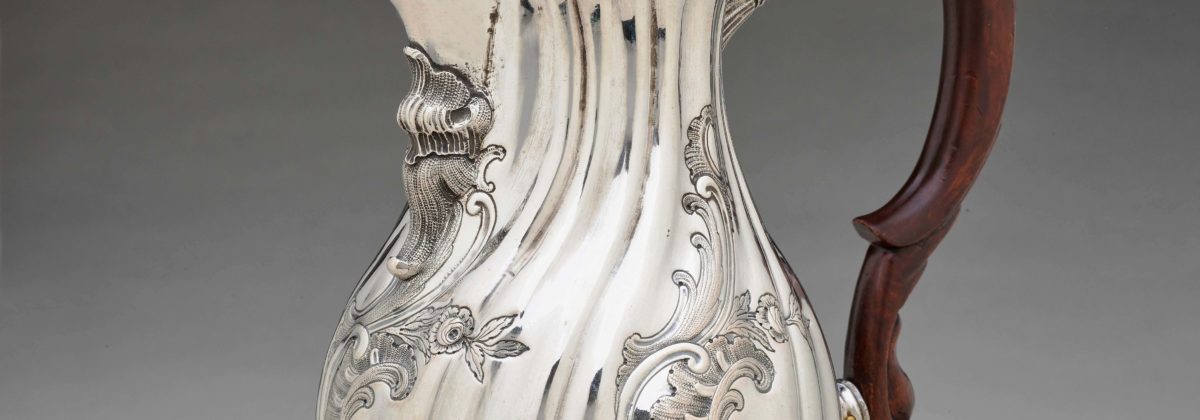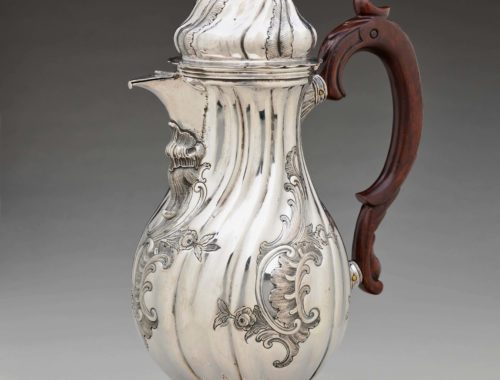Object Number: #505
Augsburg, 1761/3
Maker: Johann Christoph Engelbrecht
City hallmark: a “pyr” with the letter “P” for Augsburg, period 1761/3 (Seling 2007: no 2220)
Maker’s mark: initials, that is the monogram “ICE” in an oval shield for Johann Christoph Engelbrecht (ca. 1707-1758) (Seling 2007: no 2307)
Dimensions: height: 33,5 cm (12,9 in.); weight: 700 gr.
Detailed Information
German Silver Rococo Coffee Pot
This coffeepot is a very fine example of the Augsburg Rococo. The pot is standing on a bright, round and slightly curved foot. The body has a bulging form and is tapering towards the upper part. The decoration consists of twisted lines that run the whole body, as well as of rich rocaille and flowers ornaments. The short, attached spout has a hinged lid and on its lower side, it is adorned with generous rocaille and flowers décor. The vaulted, detachable lid has equally a rich decoration with twisted lines, acanthus leaves and a stylized pine kernel as a lid knob. The original, side handle has a scrolled thumb rest and a curved, ridged décor.
The present coffeepot is surely executed and provides a wonderful example for the enforcement of the rococo-style in South Germany.
Maker
Johann Christoph Engelbrecht, a protestant, was born around 1707. He became a master maker in 1739 and on the same year, he got married to Maria Elisabeth Sedelmayr. He died in 1758. His workshop continued to deliver silver objects until around 1767-1769.
There are many coffeepots, teapots and chocolate pots from the hands of Engelbrecht that have been delivered to us today and are kept in important private and public collections in Europe.
Literature
Baumstark, R. & Seling, H. (Hrsg.), 1994, Silber und Gold: Augsburger Goldschmiedekunst für die Höfe Europas, Kat. Ausst. Bayerisches Nationalmuseum, Bd. II, München: Hirmer Verlag/Bayerisches Nationalmuseum.
Seling, H., 1980-2007, Die Augsburger Gold- und Silberschmiede 1529-1868, Bd. I-III, München: Beck Verlag.



